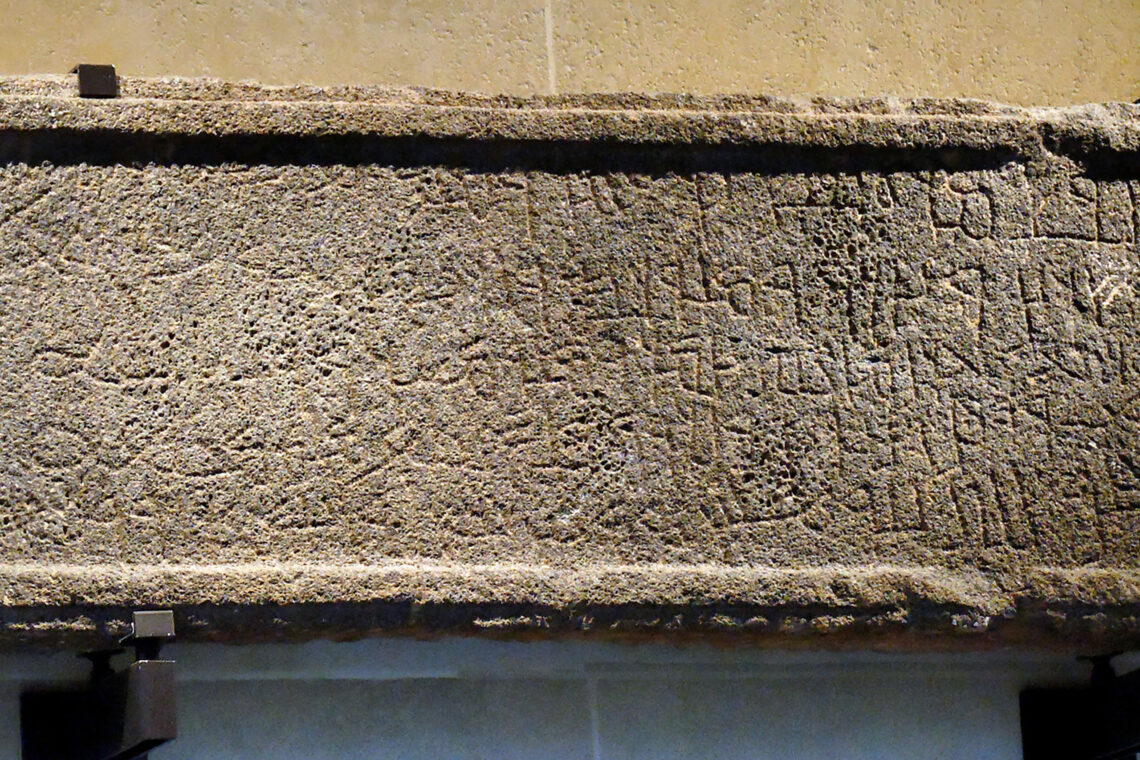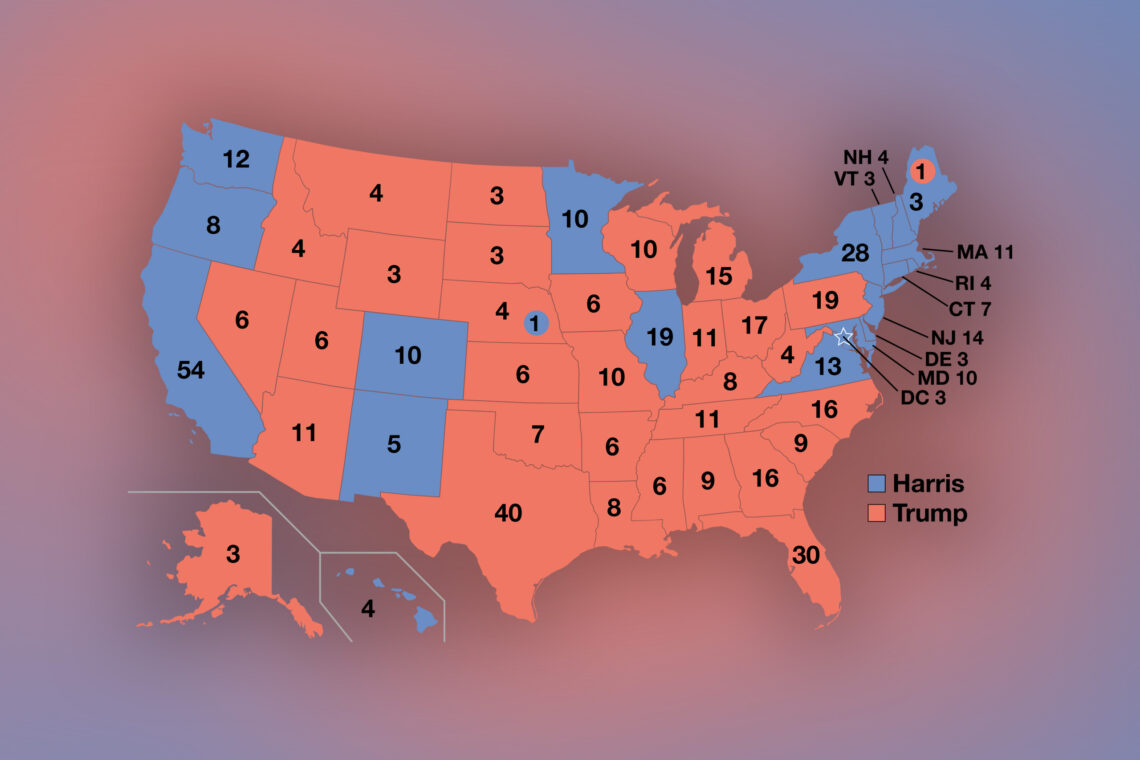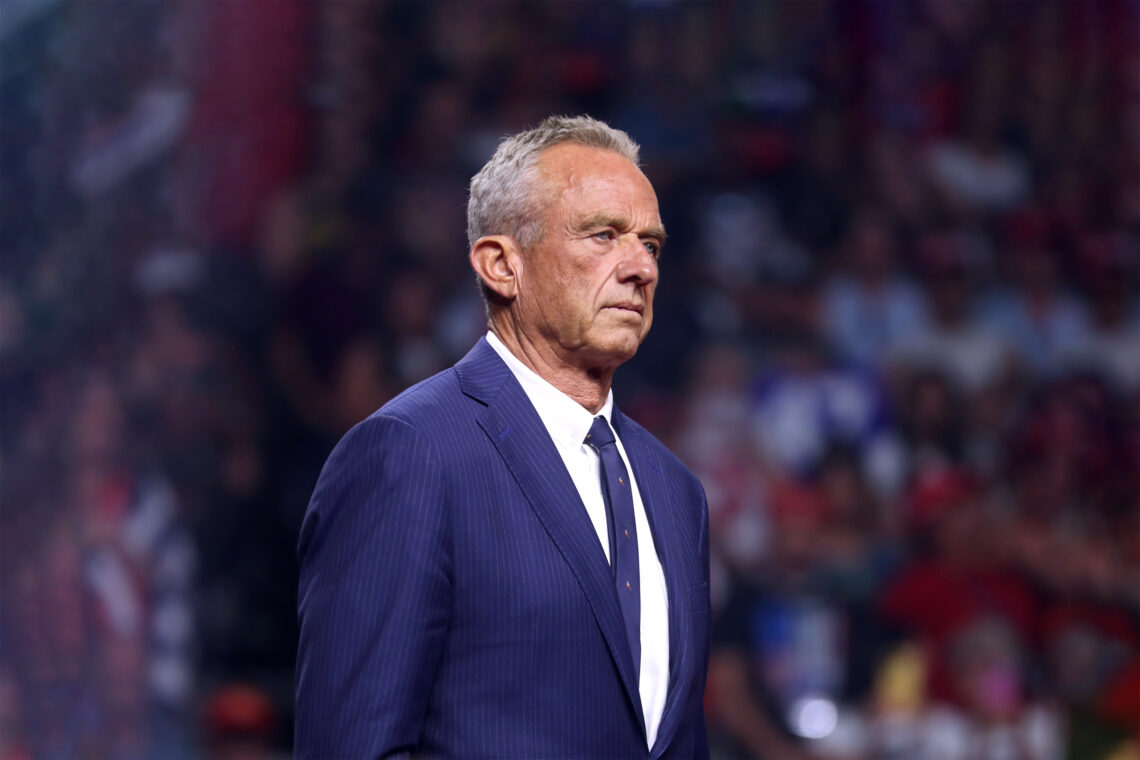Do we really know what the Koran says? Most Muslims, especially Arabic-speaking ones, would probably say that they do. Religious leaders, the imams and muftis, as well as memorizers of the holy book, are, in fact, authorities in explaining its inner meaning and vocabulary. Most see it as God’s final word and revelation preserved in a heavenly tablet (lawh mahfudh). Only those who are purified are allowed to touch it. Because the Koran was revealed and written in Arabic, a good knowledge of Arabic and of the Meccan environment are crucial to grasping its words and meanings, especially since many of our understanding of the Koran’s verses (ayat) and chapters (suras) are not part of the Koranic text itself and were grafted onto it much later, often in the 9th century.
For example, the first revealed sura in the Koran (surat al-`alaq) starts with the imperative: “Read in the name of your lord (rabbika) who created.” We have come to believe that it was the archangel Gabriel (jibreel) who came to the Prophet Mohammed who was meditating in a cave outside Mecca, almost squeezed the life out of him, and then asked him to read. The prophet answered that he can’t read (because he is illiterate), but jibreel kept squeezing anyway and then revealed God’s message.
Now, the whole scene of a man in a cave and jibreel squeezing him is not in the Koran. It first appeared in the biography of the prophet by Ibn Hisham almost two centuries later, although Ibn Hisham’s work is supposedly based on Ibn Ishaq’s account in the 8th century. We can then imagine what the Koran may sound like if we removed these later interpretations and only kept the text. The verse “Read in the name of your lord who created” would suggest that someone is talking to a listener or reader, presumably at a time and place when writing and reading seem to be possible. There are no caves or angels in this story—only someone telling us to read. It may well be that this is the message of an inspired person, not someone who is channeling God’s words. In fact, this would make more sense if we realized that jibreel is only mentioned on two occasions late in the composition process of the Koran, one involving a marriage dispute and another a highly ambiguous passage suggesting that he may be God’s warrior. In other words, jibreel doesn’t have much of a role in the Muslim holy book, whereas the notion of wahy (akin to inspiration) is frequently mentioned and ruh, a phenomenon beyond human comprehension, is mentioned twenty-three times.
If we applied this method to the whole Koran and removed later explanations of the verses and suras, we would walk away with a very different meaning. The Koran would very much sound like a product of its Arabian and tribal milieu, reflecting the customs of Mecca and its region. It would be the story of a Meccan’s quest to start his own religion, which meant turning against other deities and transforming the pagan city of Mecca into a sacred place with a new mythology and new rites, some of which have been redefined as Islam expanded into other regions. For example, pre-Muslim Meccans used to sacrifice dromedaries as part of their pilgrimage rituals, and the Koran says nothing about what is exactly to be sacrificed on the 10th day of the hajj. Moreover, there are no sheep in the deserts of Arabia; even today, they are almost all imported from Australia and other nations to meet this religious ritual. But now people use sheep for sacrifice, a practice that was probably introduced in Iraq or Syria, not in Mecca.
The example of surat al-`alaq is one of the many examples cited by the Arabist French scholar Jacqueline Chabbi in various articles, interviews, as well as in her book Le Coran décrypté: Figures bibliques en Arabie (2008), a treasure trove of eye-opening and—in fact—revealing information. Chabbi has done stunning work working within the Koranic text to decipher the making of Islam. Since the tradition of the hadith (prophet’s sayings and doings) and other historical works about the birth of Islam were written a century or more after the presumed death of Mohammed, she almost has no option but to take the Koran for what it is and reconstruct the history of its time from its text. Knowing that “the Islam of the historian has yet to be written,” she approaches the Koran armed with an extensive knowledge of the Arabic language and an equal mastery of the biblical traditions that preceded the Koranic event. As we follow her methodical anthropological work, we come to realize that the Koran is, first and foremost, a document that is inspired by the desert culture of Mecca and its environs and is clearly addressed to the people who inhabited such places.
Knowing the Meccan language and worldview would, therefore, help us in making sense of the Koran and its message. Take a term like jahiliyya, for instance. We have come to define it as a description of the pre-Islamic period, a time when people were lost in the darkness of disbelief, a situation that was rectified and made whole only by the coming of Islam. But the term in ancient Arabic meant a “space without signposts,” a dangerous place in the sun-drenched desert which could easily lead to death. In a similar vein, the Arabian desert forces changes in older biblical tales. The story of Noah and the flood are rewritten to reflect the environment of Arabia. Noah’s ark (fulk) is built under the watchful eyes of Allah and sails on burning waters, but the story excludes the diluvian rains (40 days and 40 nights) in the Bible because such a possibility simply doesn’t make sense in the Arabian desert. The 9th-to-10th century Persian historian Tabari said that the hot waters of the deluge gushed out of rocks that belonged to Eve—which Noah inherited—and that Mecca was spared the deluge. The fulk, according to him, landed on Mount Judi, near present-day Cizre, a Turkish town on the border with Syria.
Meccan moral codes permeate the Koranic narrative and anyone who transgresses them is severely punished. The Arabian tribes of `Ad and Thamud are warned by Hud and Salih, respectively, before they are destroyed for attempting to build in stone, a practice resented by the nomadic Bedouins of Arabia, whose mud houses and tents or one-room homes, separated by hijabs (a term that never refers to clothing), are not supposed to last much beyond the lives of their owners. The people of Thamud are also punished for violating one of the many harams (protected spaces) that dotted the Arabian Peninsula, including the restricted natural enclaves called hawta, by killing a protected she-camel. One shout (sayha) and Thamud is reduced to dust. In fact, even the Muslim images of hell and heaven derive directly from the desert environment. Nothing could be more hellish than the scorching hot sun (shams) of the desert, which dries up everything and only grows the horrible zaqqum tree. The cool moonlight, on the other hand, is the nur that provides relief and guides to salvation. Allah is, in fact, all nur. As for paradise (janna), it is a place without sun or cold (la shamsa fiha wala zamharir).
In this vast desert place it was Mecca, the birthplace of Mohammed, that would be invested with a sacredness so monumental that the city, along with Medina, are the only places in our world today that don’t allow anyone who is not Muslim to enter them. Without access to archeological work, we may never be able to know exactly what happened, especially since so much destruction by the iconoclastic Wahhabis has already taken place and the city is emerging as the Las Vegas of Arabia. Still, Chabbi can still rely on her method to guide us through its early history.
Mecca is not an oasis town and owes its sacred status to existence to a system of wells, most famously that of Zamzam (a miracle in the hot desert). Located east of the Ka’ba, the well is known never to dry up and to have healing powers. Muslim pilgrims to Mecca often bring some of its waters back to their relatives. The Ka’ba itself (bayt), with its black stone, was the dwelling of god—bayt rabb—in ancient pre-Islamic Arabia, a belief that has left its own traces in Islam. It is from this modest place that Mohammed starts to preach a universal message before he migrates to Yathrib (Medina). That journey would be fatal to Islam’s relations with Jews and Christians and would change Mecca forever.
The Koran doesn’t mention the Jewish tribes of Medina (Qaynuqa, Nadir and Qurayza), but Mohammed’s anger toward them for refusing to acknowledge his prophetic role is clear throughout the Medinian text. They are described as ingrates and hypocrites (munafiqun) whose hearts are diseased (alladina fi qulubihim marad); they are cursed (mal`unin) people who would be cut into pieces (ukhidu wa quttilu taqtilan). Because they disbelieve in Mohammed’s message, they lose their special status of a chosen people and are reduced to mere mushrikun, people who worship other gods beside Allah. Jews are now blamed for tampering with their scripture, as opposed to just receiving it from God. (The idea of tanzil means that God delivers a message that cannot be altered, only transmitted.) Moreover, they are accused of being killers of prophets, which in the Arab mind of the time, is synonymous with killing God himself. Ironically, though, they are refused the claim of killing Jesus, even though that is what the Koran has them admit to doing.
It was during this phase that Mecca is progressively Abrahamized. From modest beginnings in the Meccan phase of the Koranic text, Abraham—never recorded to have set foot in that part of the world and is supposed to be buried in Hebron—evolves into the founder of the Ka`ba, including the pilgrimage rites associated with it. Like Moses he shows up with his own suhuf (parchments), which are used by Mohammed to prove his own prophecy. Although Abraham is a mythical figure, an umma (guide), who is neither Jewish nor Christian, but a hanif, a man of pure faith, a muslim, he prays to God to choose a messenger (rasul) from among the Meccans to show them Allah’s signs, the book of their destiny (kitab), and to purify them. Understandably, then, the qibla, or direction of prayers (never counted as five in the Koran) shifts toward Mecca.
With time and more conversions, the myth of Abraham developed into an elaborate story with its own sets of rituals. Mohammed was believed to be a descendant of Abraham’s oldest son, Ishmael, even though nowhere in the Koran is there any suggestion (as is the case in the Bible) that Ishmael engendered any children. This is a later development. The Koran makes it clear that Abraham is survived by the descendants of Isaac, Jacob, and the twelve tribes of Israel, the asbat. But later Muslims, taking a page from the Bible, had Ishmael married to two women and engendering twelve Arab tribes, a fact that, again, is never mentioned in the Koran.
The rituals of the hajj (Muslim pilgrimage) developed out of the new role the Koran gave Abraham following Mohammed’s clashes with the Jews of Medina, even though most of these rituals have no support in the Koran. When pilgrims walk the trail between the hills of Safa and Marwa, they are supposed to be reenacting the frantic to-and-fro journey of Hagar and her baby son Ishmael looking for water. When they collect water from the well of Zamzam, they believe they are drinking from the source that gushed out from Ishmael’s feet, perhaps with the help of the archangel jibreel. Neither event is mentioned in the Koran. Similarly, the reenactment of the sacrificial ritual of Abraham and Ishmael, which was supposed to have taken place in Mina, a short distance from Mecca, is most likely based on the Islamization of an ancient pagan ritual. Again, the Koran makes no connection whatsoever between the rituals of sacrifice and pilgrimage. Thus, almost everything involved in the pilgrimage (hajj) rituals is an invention of the post-Koranic phase from the 8th and 9th centuries. It was a way for new Muslims in Iraq to recover a memory and rewrite it for a vastly different world. The “sheep” Muslims got to refine what the “dromedary” pagans had started.
After Mohammed conquers Mecca in 630, he opens a new front on the Christian oases of the north. At this moment, the Koran’s previous favorable view of Christians (rum or nassara) changes dramatically, as it has with the Jews before. Unlike the Jews and polytheists, Christians are initially described as expressing the sincerest friendship (mawadda) to Mohammed, partly because they have humble preachers (qississun) and monks (rubhan); they even welcome Islam and attest to its truth. This honeymoon phase doesn’t last, as the monks (ruhban) would be attacked, along with the rabbis (rabbaniyyun). At this point, neither Jews nor Christians can be taken as allies (awliya). They all expropriate other people’s goods unjustly (ya’kulun amwal al-nas bil batil). The men of Mohammed are now ordered to fight them until they are humbled into paying tribute (jizya). Later tradition has Mohammed writing letters to the Byzantine Emperor or Caesar (qaysar) Heraclius and the Persian king Khosrau II (qisra), among other contemporary leaders, inviting them to embrace his faith to save themselves and their nations.
Chabbi’s reading of the Koran is one way to approach the early history of Islam, one that is stripped off the cultural accretions of later centuries. The Koran comes across as a series of impressionistic statements, with allusions to biblical figures and local Arabian traditions that may have been familiar to the writer or writers’ audiences, but which certainly needed extensive clarifications when the advanced civilizations of Persia and Byzantium adopted Islam. In any case, what seems to be clear is the modest outpost of Mecca was chosen to be the site of a fabulous tale about Abraham, his slave-wife and son and, in the process, rise to become the holiest place of an expanding empire.




It is amazing that the existence of Mecca when the Koran was written is rarely questioned even if the antiquity is totally silent about it! But there are other strong reasons to doubt about its existence or to question the birth of islam in Mecca. Already a few scholars considered that either Mecca didn’t existe or that we have to look elsewhere to know the historical truth about the birth of islam. The more I study islam the more I realise how the muslim tradition has been misleading and still is!
I find your angle that unless a person knows Mecca, its people, and culture it is difficult to fully appreciate the Koran, debatable. For me, Islam is a religion for all people at all times. I know many converts to Islam who have never been to Mecca, nor do they know its history or culture, yet they have profound insight into the Koran and the teachings of Islam. Also, I would love it if you wrote more about Hajjar and her status once she gave birth to Ismael. Doesn’t she become by Abrahamic law Abraham’s legal wife after she gives birth? Shouldn’t Ismael be considered the firstborn son in terms of inheritance? Is the issue of inheritance and status a major impetus for Sarah’s insistence that Hajjar be abandoned in the desert?